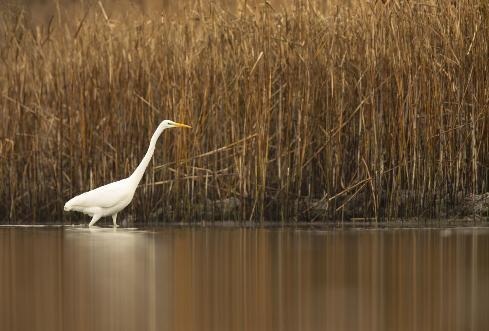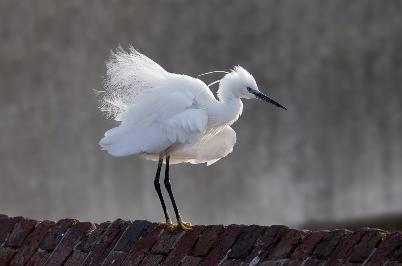
2 minute read
Egrets & the forming of the RSPB
By Alice McDougall, RSPB Pagham Harbour
What is the Connection?
Advertisement
Pitched against a moody grey sky, or the pale tan reeds of RSPB Pagham Harbour, the pure white egret is a magical sight. You are likely to see Little Egrets and Cattle Egrets, and if you’re lucky, you might also see the stunning Great White Egret.
Although there is some evidence of egrets in the UK dating back to the fifteenth century, detailed information is scarce. This all changed in 1989 when Little Egrets started to arrive from Europe; now more than 1100 pairs are breeding in the UK.
Little Egrets
The Little Egret is a common sight around RSPB Pagham Harbour and Medmerry. This elegant bird with its black beak, black legs and somewhat comical yellow feet may seem rather gentle and unassertive compared to the more raucous seabirds of the area. During breeding season it displays beautiful long white plumes on its nape and back.
Cattle Egrets
Little Egrets could be confused with another very recent resident – the Cattle Egret, which has been breeding at Pagham Harbour since 2020. As the name would indicate, they are likely to be seen pecking around the feet of cattle for insects to feed upon. You might also notice that it is a stockier bird with shorter legs, a smaller head. During the breeding season, its bill turns yellow and the plumage takes on a orangey tan colour on its crest, breast and lower back.
Great White Egrets
These large, pure white herons are a magnificent sight. If you spot a Great White Egret at RSPB Pagham Harbour or Medmerry it is likely to be a visitor from Europe, or on its way to or from a breeding site in the UK – more than 60 young birds fledged in Somerset in 2022 alone – per- haps one day they’ll be breeding here in West Sussex too.
The Fashion for Feathers
What is the connection between egrets and the forming of the RSPB? From 1870 – 1920, the fashion for feathers in ladies’ hats was booming, fuelling what became one of the most lucrative trades in the world. It was an industry which saw the decimation of millions of birds both at home and abroad: Native species such as kingfishers, great crested grebes and owls were hunted, as well as birds of paradise, ostrich, peacocks, parrots, macaws, humming and many, many more.
Three Pioneering Women
From this emerged three key women: Eliza Phillips, Etta Lemon and Emily Williamson, all passionate about the lives of birds and conservation. While Emily Williamson was forming The Plumage League in Manchester, Eliza Phillips and Etta Lemon were starting The Fin, Fur and Feather Folk in Croydon; they later joined forced to form the Society for the Protection of Birds (SPB) in 1889.
In 1890 they produced their first leaflet: ‘Destruction of Ornamental Plumaged Birds’, which focused on the annihilation of the egret population, appealing to women to stop buying hats with feathers.
They went on to disseminate thousands of leaflets denouncing the hunting of birds and the use of feathers in fashion. In 1904 the SPB received the royal charter from Edward VII and became the Royal Society for the Protection of Birds as we know it today.
Why not join us on one of our guided walks this month to see if you can see some egrets? Find out more by visiting our website https:// events.rspb.org.uk/paghamharbour or call 01243 641508.
www.rspb.org.uk/paghamharbour











